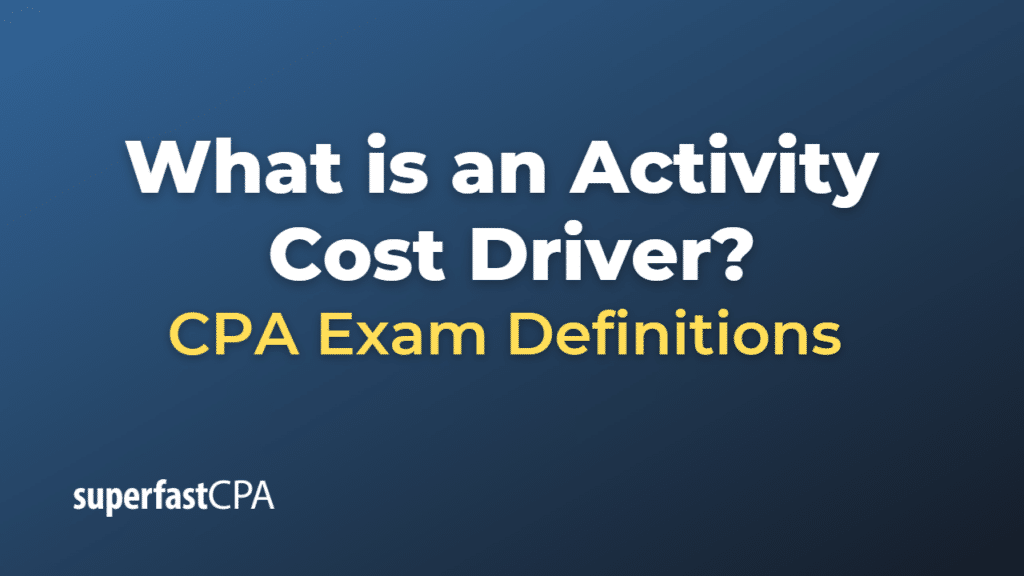Activity Cost Driver
An Activity Cost Driver is a factor that influences or contributes to the cost of a particular business activity. In activity-based costing (ABC), cost drivers are used to allocate the costs of various activities to products or services. They help to establish a more accurate relationship between the resources consumed and the cost of a specific activity. By identifying cost drivers, businesses can better understand the drivers of their costs and make more informed decisions about resource allocation, pricing, and process improvements.
Cost drivers can be either unit-level, batch-level, organizational-level, or product-level, depending on how they relate to the activity. Examples of cost drivers include the number of labor hours, the number of units produced, the number of machine hours, the number of batches, or the square footage of a facility.
Example of an Activity Cost Driver
Let’s consider a fictional company, XYZ Manufacturing, that produces two types of furniture: tables and chairs. The company uses an activity-based costing (ABC) system to allocate its overhead costs to the products.
One of the activities involved in the production process is assembly. XYZ Manufacturing has determined that the cost driver for the assembly activity is the number of labor hours required for assembling each product. The company collects the following data for a given period:
Total assembly cost: $10,000 Total labor hours: 1,000 hours
During this period, XYZ Manufacturing assembles:
- 100 tables, requiring 600 labor hours
- 200 chairs, requiring 400 labor hours
To allocate the assembly cost using the activity cost driver (labor hours), we first calculate the cost per labor hour:
Cost per labor hour = Total assembly cost / Total labor hours Cost per labor hour = $10,000 / 1,000 hours = $10 per labor hour
Next, we allocate the assembly cost to each product based on the labor hours required:
Assembly cost for tables = 600 labor hours (tables) * $10 per labor hour = $6,000 Assembly cost for chairs = 400 labor hours (chairs) * $10 per labor hour = $4,000
By using the activity cost driver (labor hours), XYZ Manufacturing can allocate its assembly cost more accurately to each product, helping the company make better decisions about pricing, resource allocation, and process improvements.













